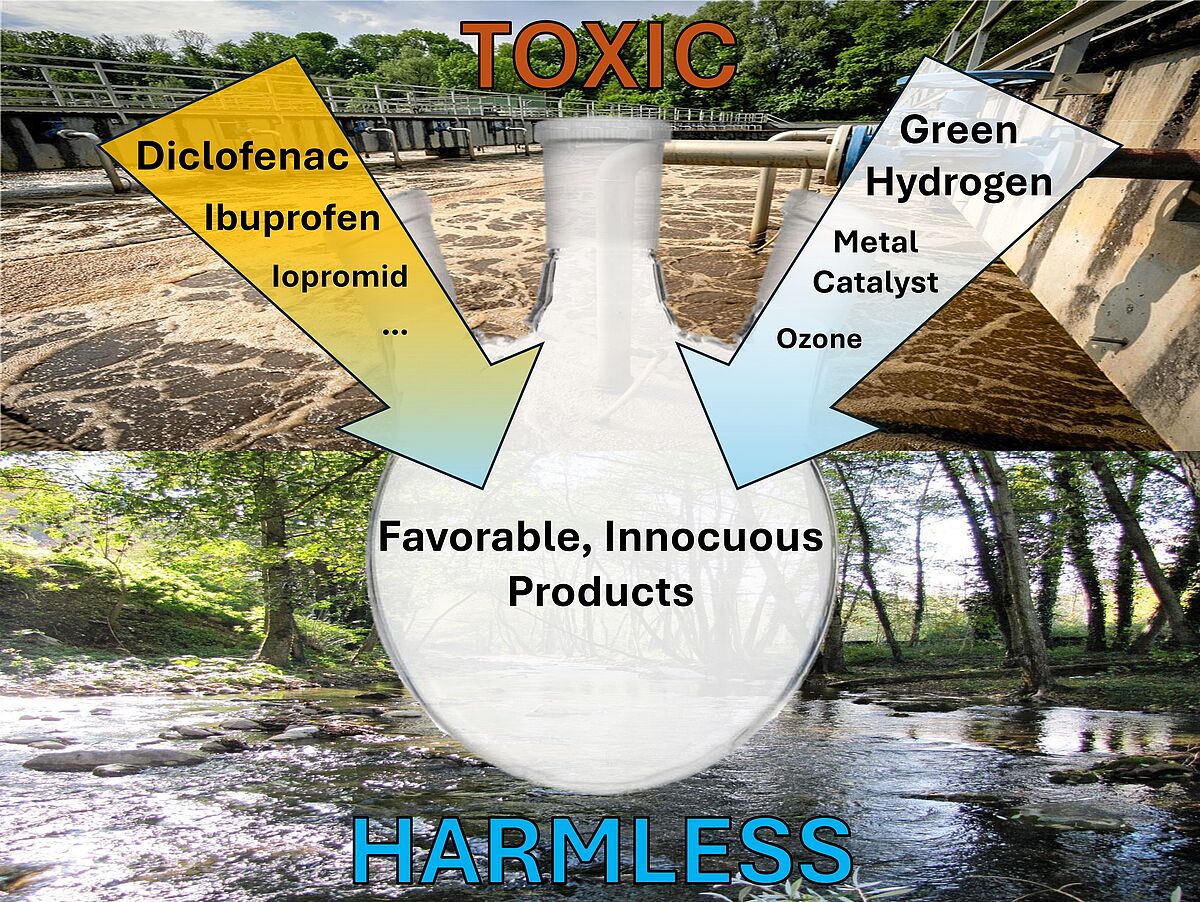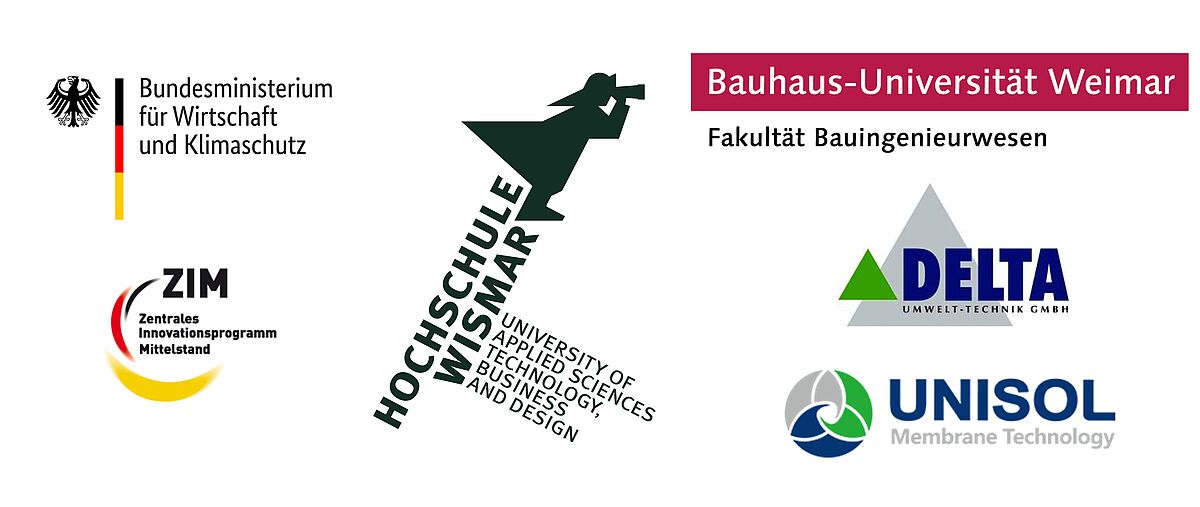The aquatic environment is currently polluted by a large number of anthropogenic micropollutants. Pharmaceutical substances play a prominent role in this, as they enter wastewater treatment plants via municipal wastewater and cannot be eliminated in conventional water treatment plants. A reduction in input is necessary and requires the use of advanced treatment processes (‘4th treatment stage’). Ozonation and activated carbon adsorption are established, but their broadband effect is insufficient and the use of activated carbon in particular is resource-, energy- and cost-intensive.
The planned cooperation project aims to develop and validate a new wastewater treatment process for more effective elimination of micropollutants that combines catalytic-reductive hydrogenation with an oxidative process step and enables extensive elimination of persistent micropollutants in the form of a 4th purification stage for municipal wastewater treatment plants. After completion of the project, the participating companies plan to utilise the plants and plant components, primarily as part of the retrofitting of municipal wastewater treatment plants.


